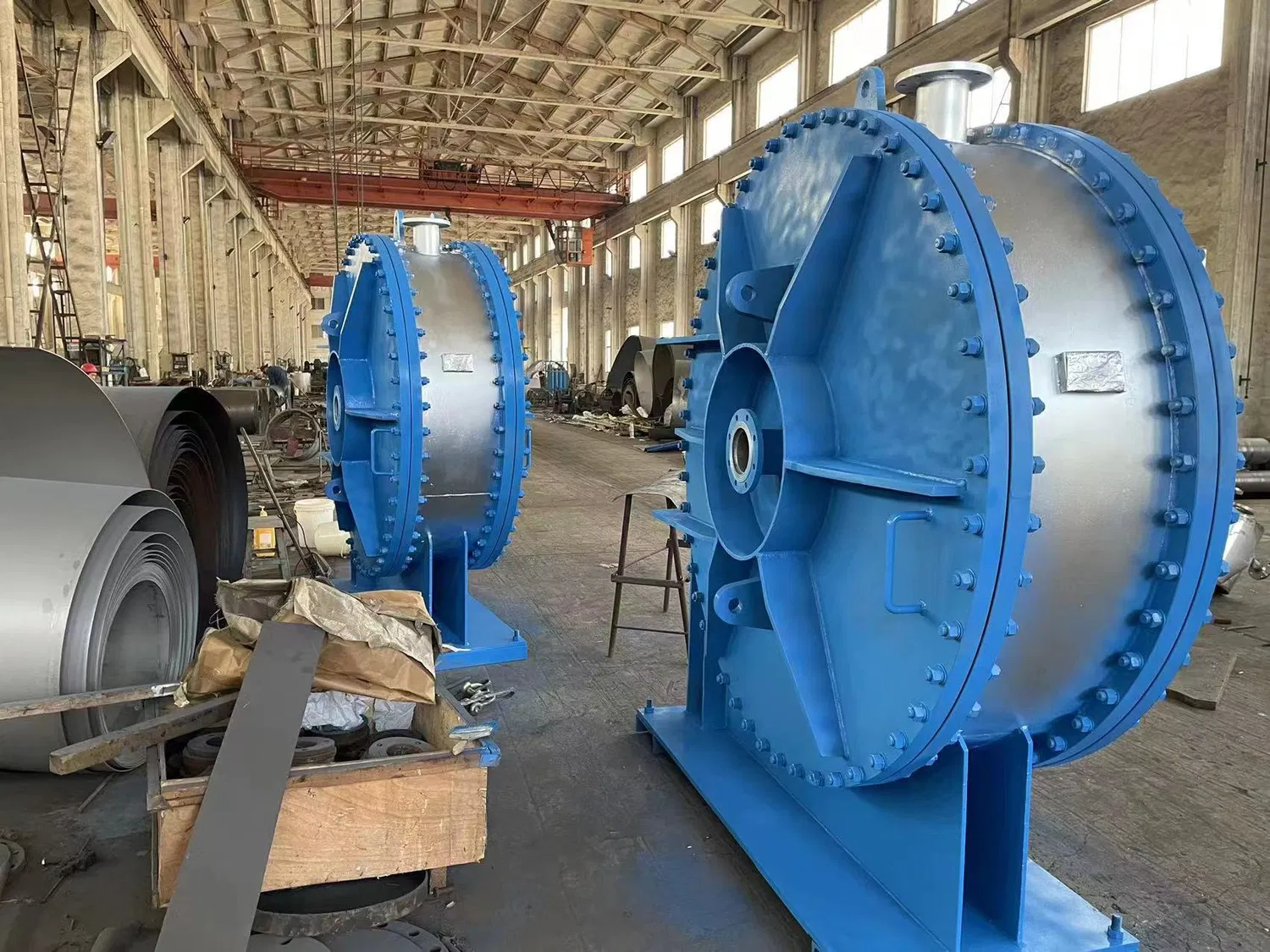Introduction
spiral heat exchanger (SHE) represents a groundbreaking advancement in heat transfer technology, designed to meet the increasing demands for efficiency, durability, and versatility in industrial processes. Unlike conventional heat exchangers, its unique spiral-shaped design allows for compact installation, making it an excellent choice for facilities with limited space. The coiled structure facilitates efficient heat transfer by promoting a high level of turbulence, which minimizes fouling and enhances overall performance. This self-cleaning capability makes spiral heat exchangers particularly suited for handling viscous fluids, slurries, and particle-laden liquids, ensuring uninterrupted operation even in challenging conditions. From chemical processing and food production to wastewater treatment and energy recovery, the spiral heat exchanger is a vital component in industries where reliability and efficiency are paramount.
What is a spiral heat Exchanger?
A spiral heat exchanger (SHE) is a highly efficient heat transfer device designed with a unique coiled configuration. Unlike traditional plate or shell-and-tube heat exchangers, the spiral heat exchanger’s design consists of two flat plates wound around a central core to create two separate spiral channels. This innovative geometry ensures a high level of thermal efficiency while handling challenging fluids such as viscous liquids, slurries, or fluids containing solids. Spiral heat exchangers are commonly used in industries that require compact, durable, and low-maintenance solutions for heat transfer.
Design and Structure
The structural design of spiral heat exchangers provides both practical and functional advantages:
- Two Spiral Channels:
The two channels are designed to keep the fluids entirely separate, preventing mixing. This allows for efficient heat transfer in counterflow or parallel flow arrangements. - Compact Design:
The coiled structure occupies less space than conventional designs, making it ideal for plants or facilities with space constraints. - Self-Cleaning Mechanism:
High flow velocities created by the spiral channels help wash away deposits or particulates, reducing fouling and minimizing cleaning frequency. - Material Options:
Spiral heat exchangers can be crafted from a variety of materials, such as titanium, stainless steel, or carbon steel, depending on the fluid’s properties and the operating environment.
How does a spiral heat Exchanger Work?
The working principle of a spiral heat exchanger is straightforward yet effective:
- Two fluids enter through separate inlets and flow in opposite directions within their designated spiral channels.
- The counterflow arrangement maximizes the temperature difference between the fluids, increasing heat transfer efficiency.
- The spiral structure promotes turbulence, improving heat exchange while reducing the potential for fouling.
- The self-cleaning effect ensures that debris or particulates in the fluid are swept away, maintaining efficient operation.
Applications of Spiral Heat Exchangers
Spiral heat exchangers are versatile and find use in a variety of industries and applications.
- Chemical Processing: Ideal for heating, cooling, and recovering heat from aggressive chemicals, slurries, or highly viscous fluids.
- Food and Beverage Industry: Used for heating or cooling products like syrups, sauces, or slurries, ensuring hygienic and efficient processing.
- Wastewater Treatment: Often employed for sludge heating or cooling and for energy recovery from wastewater streams.
- Oil and Gas Industry: Handles crude oil, refinery products, or slurries with solid particles, enabling efficient heat recovery.
- Power Generation: Recovers heat from exhaust gases, steam, or cooling systems, improving energy efficiency.
Advantages of Spiral Heat Exchangers
Spiral heat exchangers offer several key benefits:
- Compact Size: Their coiled design takes up less space than shell-and-tube or plate heat exchangers, making them suitable for tight installations.
- High Thermal Efficiency: The counterflow arrangement and turbulence in the channels enhance heat transfer, achieving maximum efficiency.
- Self-Cleaning Capability: High fluid velocities clean the channels naturally, reducing fouling and maintenance needs.
- Versatility: Able to handle fluids that are aggressive, viscous, or laden with particulates, making them suitable for challenging conditions.
- Durability: Depending on the material used, they can operate under high temperatures and corrosive environments with minimal wear.
- Energy Savings: Their efficient design allows for better heat recovery, reducing energy consumption and costs.
Limitations of Spiral Heat Exchangers
While spiral heat exchangers are highly efficient, they have some limitations:
- Higher Initial Cost: Due to the specialized design and manufacturing, they are more expensive upfront than traditional options.
- Accessibility for Repairs: In some cases, internal parts may require disassembly for thorough cleaning or repair, which can be time-consuming.
- Pressure Limitations: They may not be suitable for extremely high-pressure applications, where shell-and-tube designs are preferred.
Industries Benefiting from Spiral Heat Exchangers
- Pharmaceutical Industry: Used for sterilization and temperature-sensitive processes.
- Textile Industry: Heat recovery and dye processing operations.
- Pulp and Paper Industry: Handles slurries and high-viscosity fluids efficiently.
- Petrochemical Sector: Facilitates heat transfer for complex chemical processes and crude oil handling.
- Waste Management: Sludge treatment and heat recovery from wastewater streams.
Conclusion
Spiral heat exchangers exemplify the integration of innovative design and superior functionality in heat transfer systems. Their ability to handle a wide range of fluids, including highly corrosive, viscous, or solid-containing substances, positions them as a preferred solution in demanding industrial environments. The compact design saves valuable space, while the self-cleaning mechanism reduces maintenance, leading to lower operational costs and increased reliability. Although the initial investment may be higher than traditional heat exchangers, the long-term benefits—such as energy efficiency, reduced downtime, and extended lifespan—outweigh the upfront costs.

